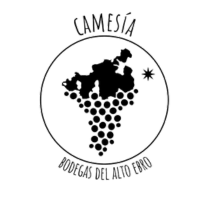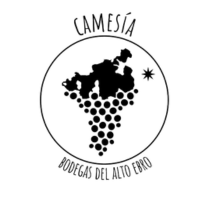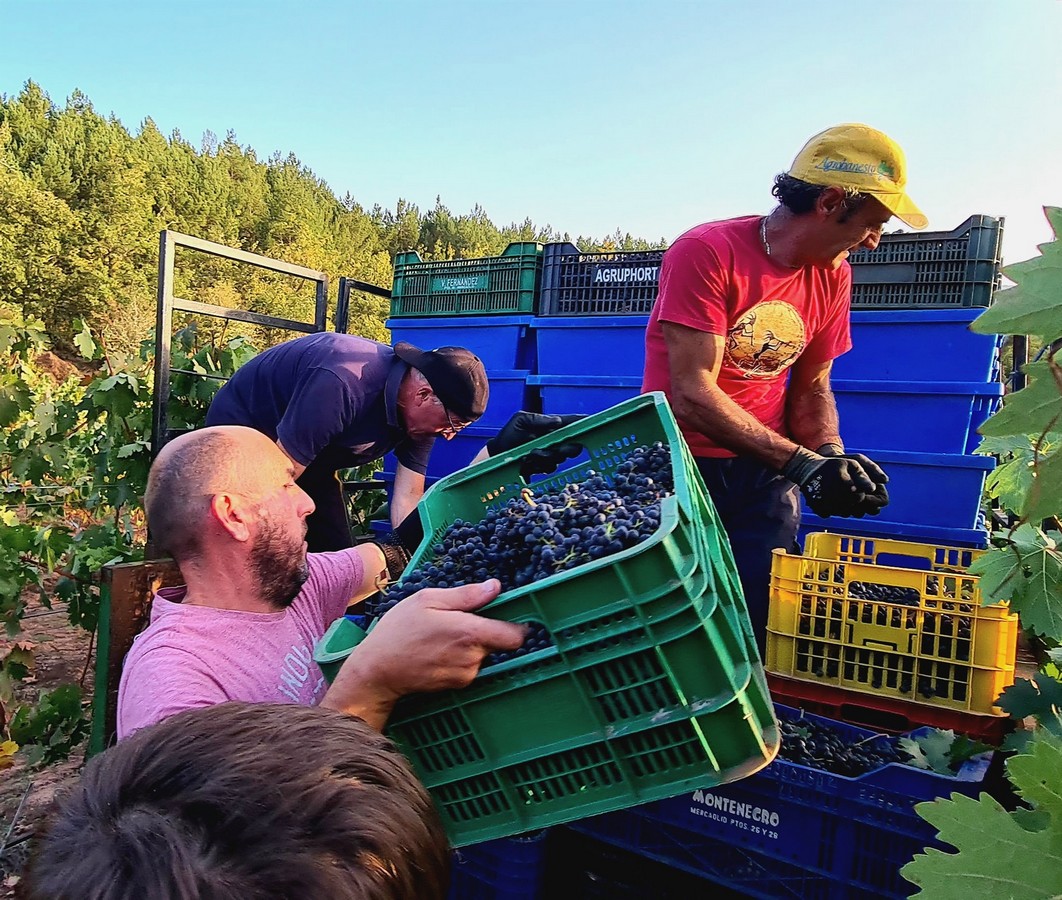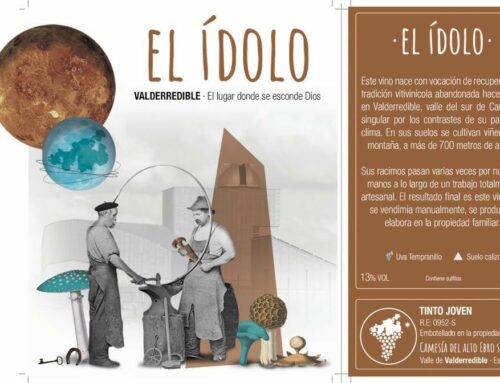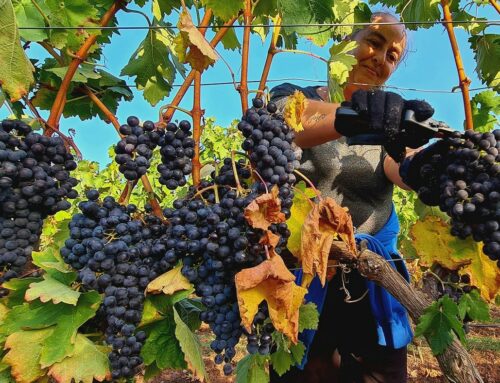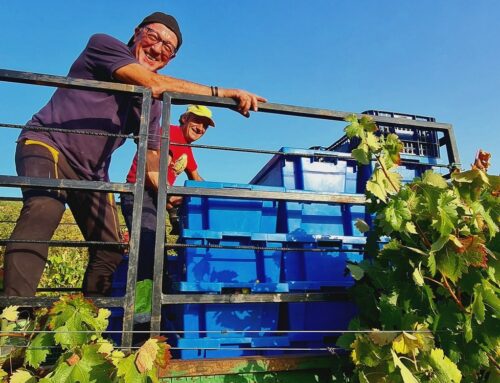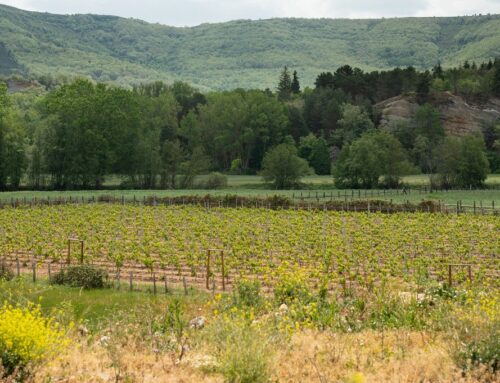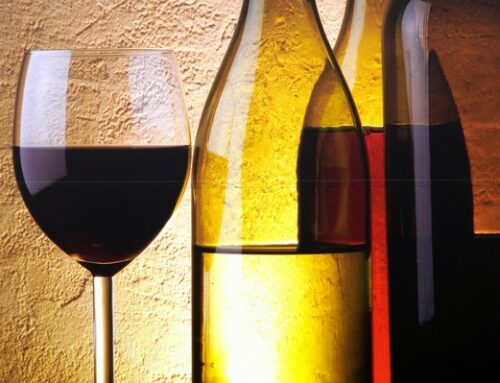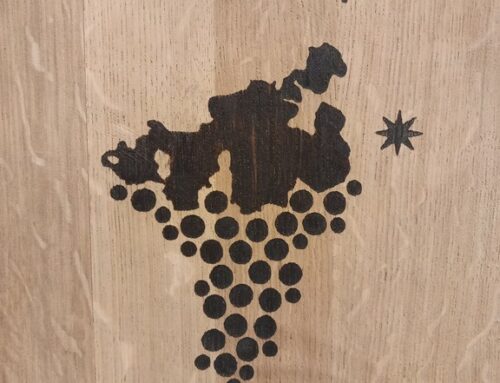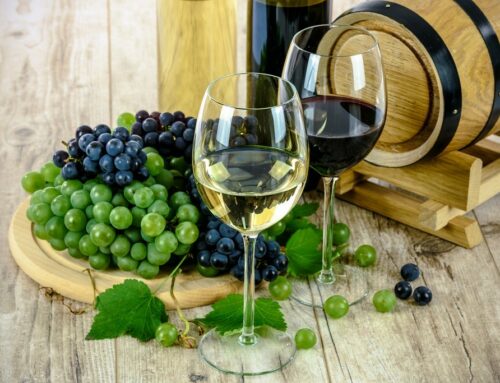HARVESTING + DESTEMMING AND CRUSHING + FERMENTATION + PRESSING + AGEING + RACKING AND CLARIFICATION + BOTTLING: WINE-MAKING CAMESIA
The production of wine is a process halfway between technology and art, because making any wine is not too difficult, getting a good wine is a costly job that requires the utmost dedication.
Strictly speaking, making wine is not a complex process. It is enough to take well-ripened grapes, squeeze them into a container and wait for the mixture to ferment on its own. It is quite possible that the taste of the resulting liquid will not please anyone, but it can be said that this is already wine.
First steps
The production of a good wine begins in the vineyards during the harvest…
The moment of harvesting is one of the most important decisions taken by the Camesía winegrower, as he has to check whether the fruit has reached optimum ripeness in relation to the wine he wants to make, although at the same time he has to bear in mind the weather forecast, as rain or frost at that moment would be disastrous.
Once the starting date has been decided, the grapes are harvested as carefully as possible, avoiding accumulating large quantities of grapes in the same container so that the bunches do not break, as premature fermentation would greatly reduce the quality of the resulting wine.
In the Camesía winery, the grapes are weighed, sorted and begin their journey through the reception hopper.
The initial processes are usually carried out on the same machine.
The first is destemming, which consists of removing the stalks from the bunches.
Then the fruit is crushed, breaking the grape berries so that the juice comes out and mixes with the skins and takes from them the large amount of aromas and flavours it contains.
The resulting mass has to ferment.
If the winemaker wants to obtain a white wine, the mass formed by the must and the skins is pressed, passing the liquid to the fermentation tanks.
On the other hand, if what he wants is a red wine, the skins and the must go through this process together to become wine.
Fermentation
For centuries man has been fermenting grapes to make wine; however, he did not know what he was doing until 1861 when Louis Pasteur discovered that the responsibility for this process lies with yeasts.
Yeasts are microscopic fungi that are dispersed in nature and that, carried by wind, insects or the agricultural work itself, adhere to the skin of the grape.
When this covering is broken, the yeasts begin their action. When they come into contact with the sugars in the fruit, they transform the latter into alcohol, while at the same time raising the temperature of the must (up to 30º or more) and releasing a large quantity of carbon dioxide gas.
During these changes, the microfungi multiply amazingly fast, but they die precisely because of the large amount of alcohol they themselves have generated.
During fermentation, the winemaker’s primary objective is to bring the full flavour and aroma potential of the grapes into the wine.
Today, it is known that there are many risks of not achieving this transfer of qualities if the product reaches excessively high temperatures.
This is the reason why the most elegant wines have traditionally corresponded to the coolest wine regions and why very strict temperature control has been imposed throughout the world, both in the rooms where fermentation takes place and in the tanks themselves.
Thus, the tanks that were once made of clay, cement or oak have been replaced, especially in the hottest regions, by stainless steel tanks that usually incorporate external “jackets” through which water is circulated to lower the temperature of the fermentation mass.
During this fermentation time, if the objective is to obtain a red wine, the winemaker has the added task of daily pumping over.
This task consists of extracting the liquid from the lower part of the tank by pumping it up to the upper part, where a “cap” has formed in which the grape skins and seeds float.
The pumping-over is fundamental in quality red wines and, if an aged wine is sought, the pumping-over can take up to four or five weeks in order to extract the greatest amount of tannins.
After this first fermentation, also called tumultuous fermentation, a second fermentation, called malolactic fermentation, can also take place, during which malic acid is transformed into lactic acid.
The result is a less acidic and smoother wine.
The latter process usually occurs naturally and sometimes coincides with the first fermentation.
But it happens that this decrease in acidity usually suits red wines but not many white wines, especially if they are young, so winemakers, in these cases, usually inhibit the process.
Woodworking
After the necessary fermentations, the winemaker has in his tanks a liquid called wine, which can then be aged in 225-litre oak barrels. Ageing in oak is a process that can last from a few months to several years and introduces significant variations in the wine.
Generally speaking, the changes that take place inside a barrel are of three types.
Firstly, there is a slow and progressive oxidation of the wine through the pores of the wood, which stabilises the colour and softens the harsh flavour of the tannins, making it easier for the bottled product to keep for longer.
The second change is that the alcohol in the wine dissolves the tannins in the oak itself, which add their flavour and aromas (vanilla and spices above all) to those of the grapes, increasing the complexity of the final product (which is the most sought-after characteristic of a wine).
The third advantage of the barrel is that, given its reduced capacity, it allows solid impurities (always present) to settle to the bottom much more easily than when the liquid is in large tanks, which facilitates the final bottling process.
The final handling of the wine aims to clean the wine of solid residues in order to present the consumer with the impeccable product that everyone wants on their table.
For this, when a wine has passed through the oak barrel and has been decanted, the formula for clarifying it consists of adding egg white, a product that precipitates any solids that are still in suspension at the bottom.
If, on the other hand, we have a young wine that has not been able to decant completely from the tank, it is necessary to filter it, a process that must be limited as much as possible, as the solids can also eliminate aroma and flavour particles.
After bottling (immediately after fining or filtering) and labelling, the young wine is ready for the market.
The aged wine, on the other hand, although it can be released for sale, usually remains in the cellar’s bottle racks for a longer period of time. Why? Because the aged red wine still has to evolve inside the bottle, in the complete absence of oxygen.
Now, in its glass enclosure, the oxidative processes initiated in the barrel are temporarily reduced and eventually disappear as the aromas and flavours integrate and harmonise.

